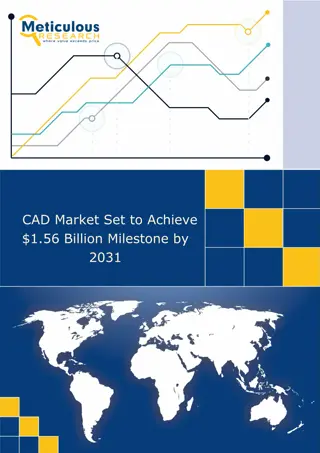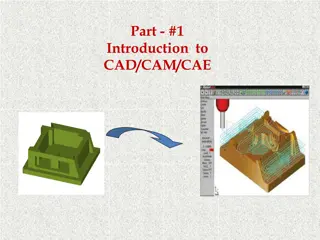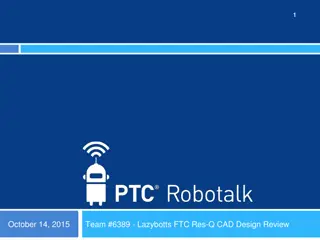
Computer-Aided Design (CAD) Overview and Benefits
"Discover the world of Computer-Aided Design (CAD) – its definition, users, benefits, and tools. Learn how CAD optimizes design workflows, boosts productivity, and enhances quality. Explore how CAD is used across various professions and industries. Uncover the advantages of CAD over traditional design methods, such as lower production costs, quicker project completion, easier collaboration, and higher-quality designs with built-in documentation. Dive into the realm of CAD and revolutionize your design process today!"
Download Presentation

Please find below an Image/Link to download the presentation.
The content on the website is provided AS IS for your information and personal use only. It may not be sold, licensed, or shared on other websites without obtaining consent from the author. If you encounter any issues during the download, it is possible that the publisher has removed the file from their server.
You are allowed to download the files provided on this website for personal or commercial use, subject to the condition that they are used lawfully. All files are the property of their respective owners.
The content on the website is provided AS IS for your information and personal use only. It may not be sold, licensed, or shared on other websites without obtaining consent from the author.
E N D
Presentation Transcript
StudyMafia.Org Computer-Aided Design(CAD) Submitted To: Submitted By: Studymafia.org Studymafia.org
Table Contents Definition Introduction Who Uses CAD? Benefits of CAD Tools Used in CAD Conclusion 2
Definition CAD (computer-aided design) is the use of computer-based software to aid in design processes. 3
Introduction The purpose of CAD is to optimize and streamline the designer's workflow, increase productivity, improve the quality and level of detail in the design, improve documentation communications and often contribute toward a manufacturing design database. CAD software outputs come in the form of electronic files, which are then used accordingly for manufacturing processes. 4
Who Uses CAD? Computer-aided design is used in a wide variety of professions. CAD software is used heavily within various architecture, arts and engineering projects. CAD use cases are specific to industry and job functions. 6
Who Uses CAD? Professions that use CAD tools include, but are not limited to: Architects Engineers City planners Graphic designers Animation illustrators Drafters 7
Who Uses CAD? Fashion designers Interior designers Exterior designers Game designers Product designers Industrial designers Manufacturers 8
Benefits of CAD Compared to traditional technical sketching and manual drafting, the use of CAD design tools can have significant benefits for engineers and designers: Lower production costs for designs; Quicker project completion due to efficient workflow and design process; 9
Benefits of CAD Changes can be made independent of other design details, without the need to completely re-do a sketch; Higher quality designs with documentation (such as angles, measurements, presets) built into the file; Use of digital files can make collaborating with colleagues more simple. 10
Benefits of CAD Clearer designs, better legibility and ease of interpretation by collaborators, as handmade drawings are not as clear or detailed; Software features can support generative design, solid modeling, and other technical functions. 11
Tools Used in CAD A number of CAD tools exist to assist designers and engineers. Some CAD tools are tailored to fit specific use cases and industries, such as industrial design or architecture. Other CAD software tools can be used to support a variety of industries and project types. 12
Tools Used in CAD Some widely-used CAD tools are: MicroStation (offered by Bentley Systems) AutoCAD (offered by Autodesk) CorelCAD IronCAD CADTalk SolidWorks 13
Tools Used in CAD Onshape Catia LibreCAD OpenSCAD Vectorworks Solid Edge Altium Designer 14
Conclusion Computer-aided design is a way to digitally create 2D drawings and 3D models of real-world products before they're ever manufactured. With 3D CAD, you can share, review, simulate, and modify designs easily, opening doors to innovative and differentiated products that get to market fast. 16
Thanks To StudyMafia.org




















